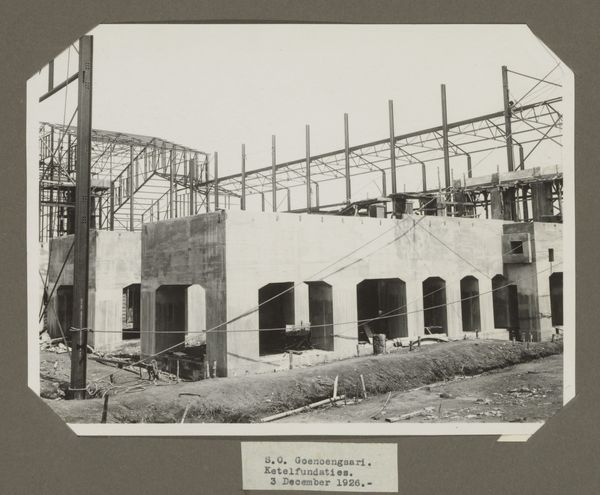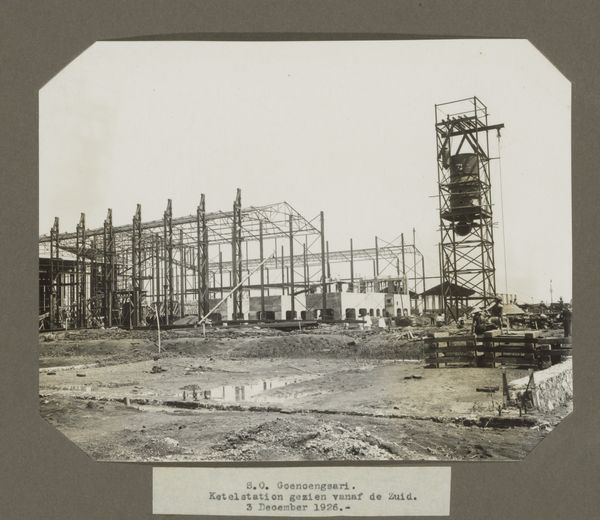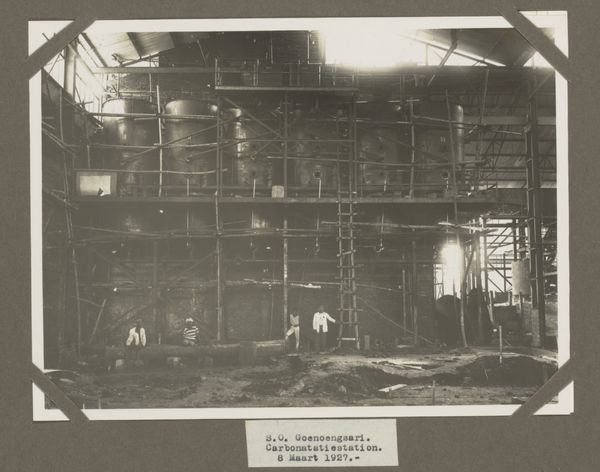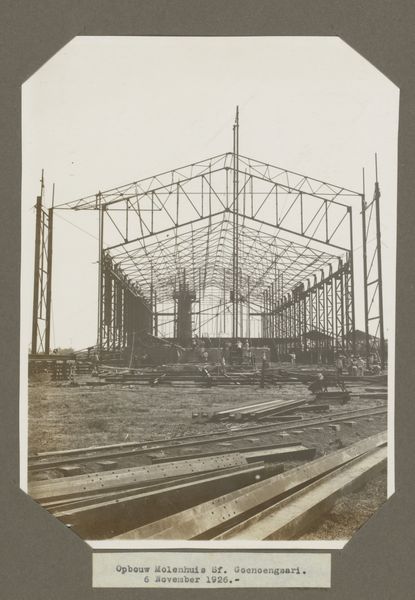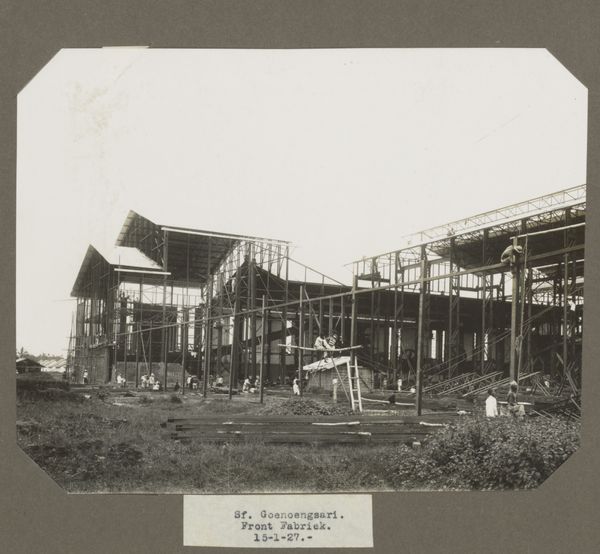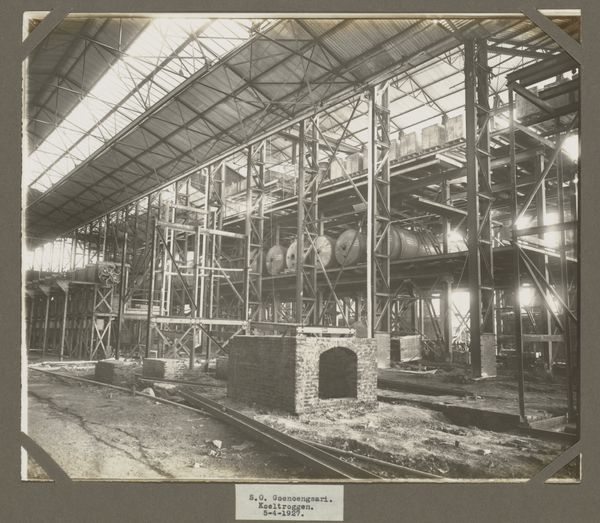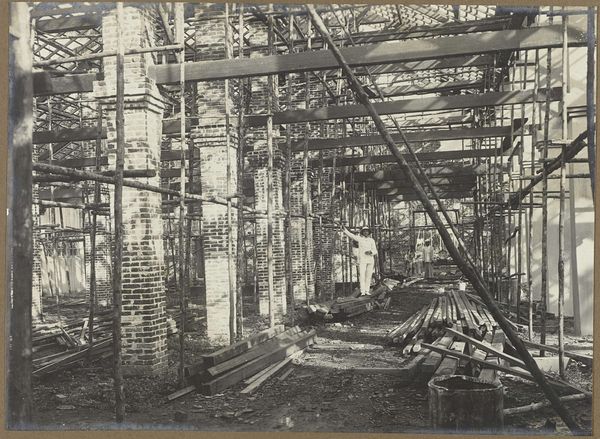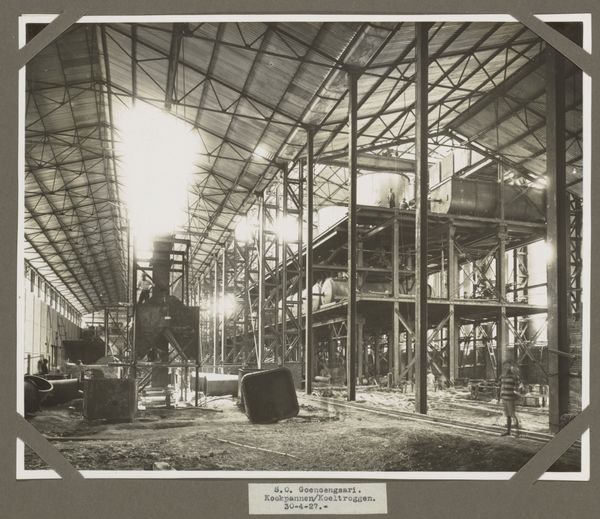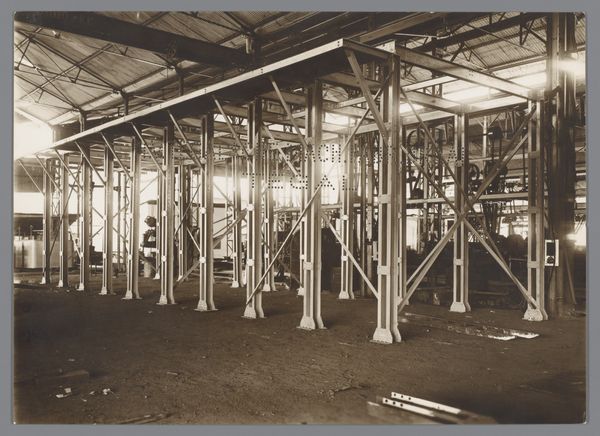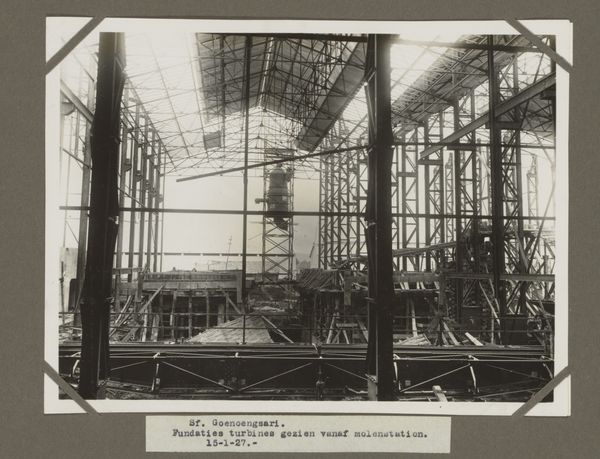
#
aged paper
#
reduced colour palette
#
photo restoration
#
reduced colours
#
desaturated colours
#
light coloured
#
archive photography
#
historical photography
#
desaturated colour
#
paper medium
Dimensions: height 174 mm, width 235 mm
Copyright: Rijks Museum: Open Domain
Curator: This photograph, titled "Gewapend betonnen ketelfundatie. 6 November 1926," which translates to "Reinforced concrete boiler foundation. November 6, 1926," offers a glimpse into early 20th-century industrial construction. The photograph is attributed to an anonymous photographer and is part of the Rijksmuseum collection. Editor: My immediate impression is one of starkness. It’s a scene of immense human effort, all depicted in a rather limited tonal range that emphasizes the gritty textures of the earth and raw construction materials. Curator: Indeed, it is interesting to consider the historical context. This image documents a moment of technological advancement, showcasing the use of reinforced concrete in building foundations. Think about the social implications, the promise of progress embedded in these new construction techniques. Editor: Precisely! You see the labor involved, the raw materiality of wood scaffolding, the rebar...it all speaks volumes about the physical process of creation. It also makes me wonder about the unseen laborers, the people who mixed the concrete, tied the rebar, their lived experiences rendered almost invisible here. Curator: Absolutely, the politics of imagery are also at play. What narrative is being constructed by choosing this particular view? By documenting this specific moment? It's important to acknowledge that photographs, especially historical ones, are never truly objective records. Editor: I find it compelling how the photo manages to almost dematerialize the building. The focus is very much on what goes into making a foundation—the rebar, the cement, the planning...almost a ghost image of the unseen structure. Curator: Yes, the image creates a palpable sense of anticipation. The bare bones of something colossal in the making, hinting at future industries, societal growth, the ever-changing urban landscape. Editor: Reflecting on this, I appreciate the raw authenticity and texture embedded in the picture itself—the very labor and material are palpable, more so than a slick photo might ever achieve. Curator: And for me, this image reminds us of how essential historical documentation is for interpreting not only the development of technology but also how society chooses to represent such advancements.
Comments
No comments
Be the first to comment and join the conversation on the ultimate creative platform.
